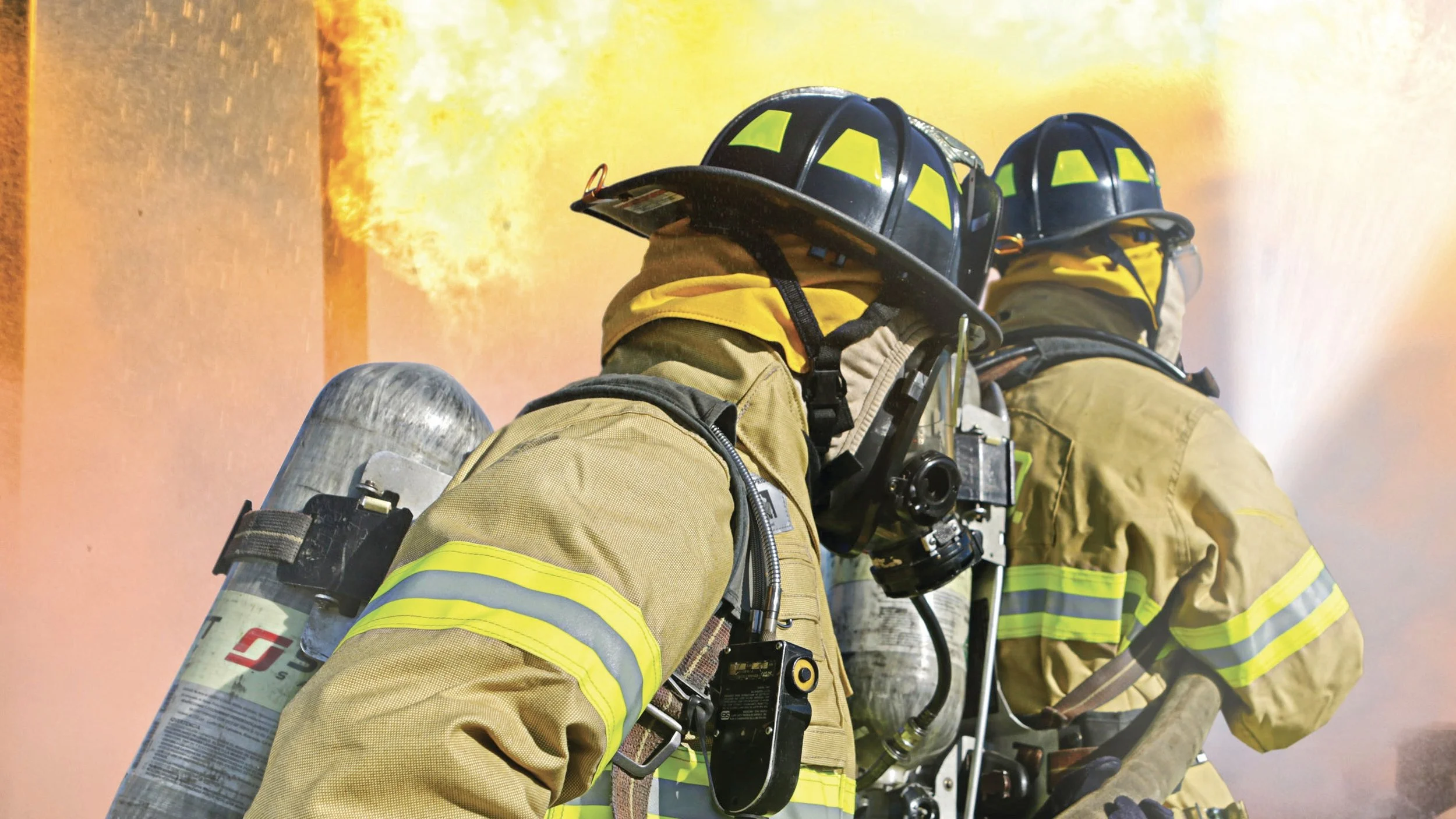Tactical Fitness: The Athlete Approach to Firefighter Readiness
By Ryan Provencher
Firefighting isn’t just a job—it’s like a full-contact sport. Learn how the tactical athlete approach helps firefighters build strength, stamina, and preparedness for peak performance.
As firefighters, we face physical, mental, and emotional demands that few professions can match. We rush into the chaos of fires, rescues, and emergencies, putting our bodies and minds on the line every day.
Given this responsibility, are we doing everything possible to prepare ourselves for peak performance and long-term health?
Football vs. Firefighting
In the early ’90s, while studying exercise science, I worked as an equipment manager for the football team. I saw firsthand what full support for the athletes looked like, including coaches fine-tuning training, doctors and athletic trainers guiding wellness and recovery, nutritionists optimizing fuel, and facilities designed entirely around performance.
Their entire environment was built around one purpose: being ready on game day.
I often ask myself: What if firefighters had that same level of investment?
What if a profession that demands so much gave just as much back in support of fitness and health?
That’s where the tactical athlete model comes in.
It reframes firefighting as a high-performance profession and pushes us to rethink not only how we train, but how labor, management, and communities invest in firefighter fitness, wellness, and readiness.
Defining the Tactical Athlete
In simple terms, an athlete is someone who engages in physical activity or sport, where performance depends on both fitness and skill.
A tactical athlete is a professional—firefighter, law enforcement officer, military member, or first responder—whose fitness and readiness directly impact safety and survival.
Unlike traditional athletes, our “game day” is unpredictable and high-stakes. Lives are on the line, which makes physical fitness, mental toughness, and purposeful training non-negotiable.
We must train like lives depend on us—because they do.
The Athlete Approach to Firefighting
Mindset of a firefighter athlete
Built on discipline, focus, and determination, the Athlete Mindset means treating every challenge as a chance to improve through consistent effort, ownership, and adaptability under pressure.
For firefighters, it’s showing up with intention—training with purpose, preparing for the unexpected, and recovering from setbacks.
Pride, accountability, and confidence follow.
living like an athlete
The Athlete Lifestyle goes beyond exercise—it’s about the choices you make and how you live every day.
For firefighters, this means fueling your body with proper nutrition, prioritizing sleep and recovery, and managing stress to protect your mental health. Together, these choices improve body composition, build fitness, and sharpen performance—while also protecting long-term health.
Because at the end of the day, it’s not just about being fit for the next call—it’s about staying strong, capable, and healthy for your entire career and into retirement.
TRAINING FOR PERFORMANCE
Performance Training for firefighters combines physical conditioning with skill development to improve job performance and response readiness.
Physical training builds strength, endurance, and movement quality—while reducing injury risk and supporting recovery.
Occupational training hones the diverse technical skills required for emergency response.
When fitness and skill training come together, it’s more than random workouts—it’s preparation for the realities of the job.
That’s the essence of the tactical athlete identity.
Applying the Athlete Approach
You don’t need a pro sports program to live like a tactical athlete. Start simple:
Train with purpose – choose a specific and comprehensive training program that prepares you for the demands of the job.
Prioritize recovery – sleep, mobility, and hydration are just as important as high-impact workouts.
Fuel like an athlete – treat nutrition as performance fuel, not just calories.
Adopt a growth mindset – every workout and shift experience makes you stronger for the next challenge.
The Benefits of Buy-In
For Firefighters
Embracing the athlete identity builds individual dedication and accountability. It reduces injuries, strengthens performance, and extends careers. The payoff goes beyond the job—more energy, less stress, and greater quality of life.
For Labor
Advocating for firefighter athletes frames fitness resources—policies, equipment, trainers—not as perks, but as essentials. This shift builds a supportive culture, replacing fear of punishment with voluntary, long-term engagement.
For management
Adopting the athlete model, like sports organizations, proves that readiness is non-negotiable. The benefits are clear—fewer injuries, lower costs, higher morale, and stronger service to the community.
Just as importantly, it shapes culture—seeing firefighters as athletes builds pride, responsibility, and effectiveness, while justifying investments in fitness, wellness, and education.
for communities
A healthier, more capable fire service responds faster, operates more safely, and earns greater trust. Communities that see firefighters as athletes are more likely to support wellness initiatives, facility upgrades, and long-term readiness funding.
When firefighters, labor, management, and communities align around the tactical athlete identity, we create a culture of readiness—one that strengthens health, sharpens performance, sustains careers, and builds public trust.
Embracing the Tactical Athlete Culture
Fire departments spend millions to keep apparatus in peak condition. But it’s the firefighters on those rigs—the people answering every call—who represent the most critical investment in safety, performance, and longevity.
The statistics are sobering:
Every year, firefighters are lost to heart disease, cancer, and suicide. Tens of thousands are injured on the job, with nearly 70% classified as overweight or obese.
Many of these risks can be reduced by adopting the tactical athlete approach and providing the same level of support athletes receive.
Firefighters need the strength of an athlete, the toughness of a competitor, and the adaptability of a first responder.
Embracing the tactical athlete identity isn’t just a mindset shift—it’s an investment in health, performance, and long-term career success.
When every level—individual firefighters, labor, management, and communities—embraces this model, we create a true culture of readiness: safer operations, longer careers, and stronger trust from the people we serve.
👉 Go to your Free Firefighter Workouts Playlist and put the athlete approach into action today!

